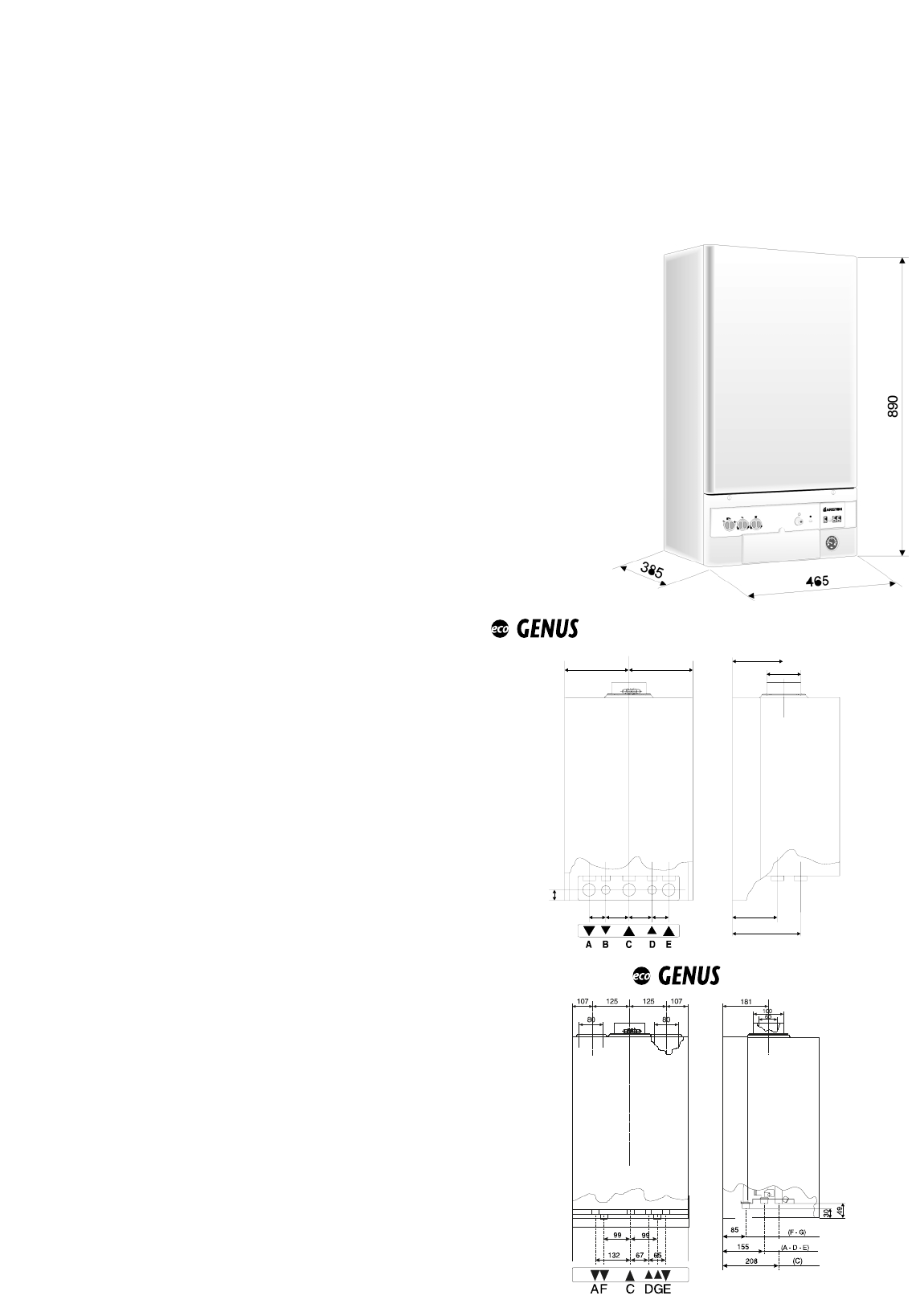
=
181
20
65 65
155
(A-B-D-E)
208 (C)
67 67
100
=
2.3. OVERALL DIMENSIONS
FIG. 2.1
24 MFFI
24 RFFI SYSTEM
4
275
The appliance may be installed in any room or indoor area, although
particular attention is drawn to the requirements of the current I.E.E.
Wiring Regulations, and in Scotland, the electrical provisions of the
Building Regulations applicable in Scotland, with respect to the
installation of the combined appliance in a room containing a bath or
shower.
Where a room-sealed appliance is installed in a room containing
a bath or shower the boiler and any electrical switch or
appliance control, utilising mains electricity should be situated
so that it cannot be touched by a person using the bath or
shower.
The location must permit adequate space for servicing and air
circulation around the appliance as indicated in paragraph 2.4.
The location must permit the provision of an adequate flue and
termination.
For unusual locations special procedures may be necessary.
BS 6798-1987 gives detailed guidance on this aspect.
A compartment used to enclose the appliance must be designed
specifically for this purpose. No specific ventilation requirements are
needed for an installation within a cupboard.
This appliance is not suitable for outdoor installation.
The type C appliances (in which the combustion circuit, air vent
intake and combustion chamber are air-tight with respect to the
room in which the appliance is installed) can be installed in any
type of room.
There are no limitations with respect to ventilation and the volume of
the room itself. The boiler must be installed on a solid, permanent
wall to prevent access to the electrical parts (when live) through the
aperture on the back frame.
2.2. SITING THE APPLIANCE
L
EGEND:
A = Central Heating Flow (3/4”)
B = Domestic Hot Water Outlet (1/2”)
C = Gas Inlet (3/4”)
D = Domestic Cold Water Inlet (1/2”)
E = Central Heating Return (3/4”)
F = Cylinder Flow (3/4”)
G = Cylinder Return (3/4”)
H = Condensate discharge


















